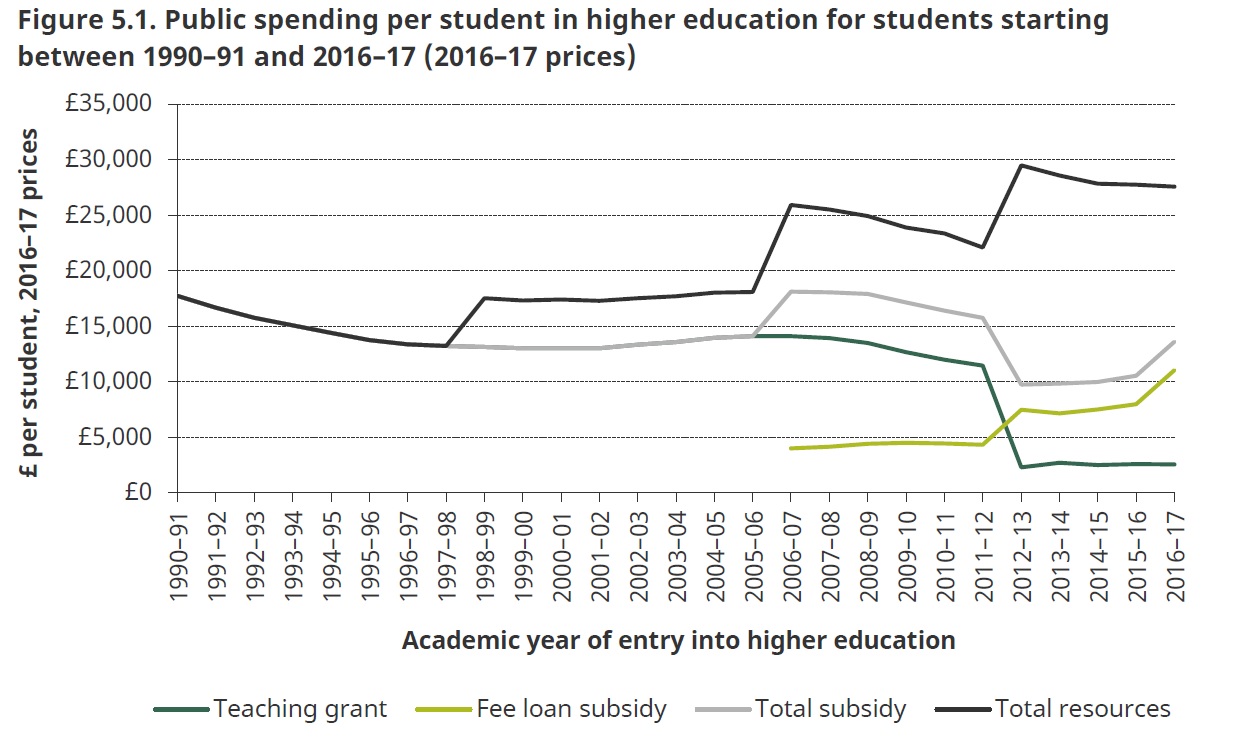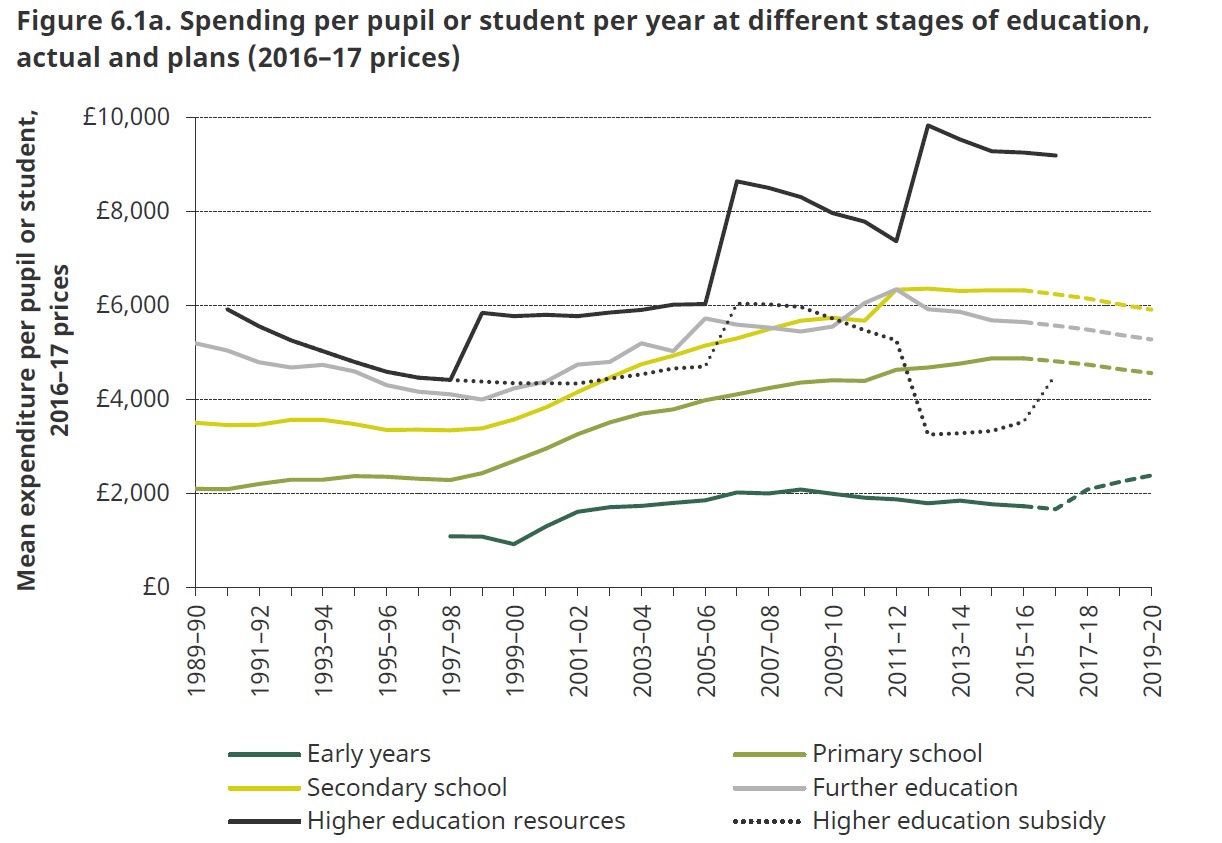In the past few years, universities in England have never had it so good – certainly in terms of the money they have to spend per student.
That is one of the key conclusions that can be drawn from an analysis of education spending in the country by the Institute for Fiscal Studies.
In a report released on 27 February, the influential research institute looks at data on government funding and tuition fees to lay out exactly how much money per student universities have had at their disposal over the past 26 years.
Its key chart (see below) illustrates exactly how the government’s big tuition fee reforms in 1998, 2006 and 2012 have impacted the amount of money that universities have available to them – and how the resources per student stagnated or fell in the years leading up to each reform.

The IFS warns that such an “erratic” long-term approach to public investment in higher education needs to be replaced by the “creation of a funding system that provides institutions with certainty about the future levels of funding”.
However, the overall picture of per-student funding over the period is one of growth. The IFS says that the total level of resources “available per student starting university in 2015 was £28,000, over 50 per cent higher in real terms than in 1990”.
Comparing higher education with other education sectors in the country indeed drills this point home.

It is true that since 2012, there has been a gradual erosion in the amount of money, in real terms, available to universities per student because of the £9,000 fee cap in England not being raised with inflation. But as the IFS report points out, this is set to change in the next few years as the government allows inflation-linked increases again as part of its plans for the teaching excellence framework.
The IFS analysis also looks at how the government’s subsidy to universities has changed over the past 26 years (see first graph above), using estimates of the share of fee loans that will be repaid in the future to help calculate the subsidy in recent years. For those starting university in 2015-16, it estimates that the government will contribute £10,500 per student once future loan repayments are factored in.
It concludes that the future level of this subsidy could be at risk of rising if the decision to lift the cap on undergraduates going to university in England means that significantly more students enter the system, especially if they go on to have lower earnings.
“An increase in the number of students taking up tuition fee loans increases the government’s exposure to non-repayment," the report says. "This might be particularly severe if the additional students have lower expected future earnings, and so repay less of their student loans, than the average graduate so far."
Find out more about THE DataPoints
THE DataPoints is designed with the forward-looking and growth-minded institution in view
Register to continue
Why register?
- Registration is free and only takes a moment
- Once registered, you can read 3 articles a month
- Sign up for our newsletter
Subscribe
Or subscribe for unlimited access to:
- Unlimited access to news, views, insights & reviews
- Digital editions
- Digital access to THE’s university and college rankings analysis
Already registered or a current subscriber? Login





